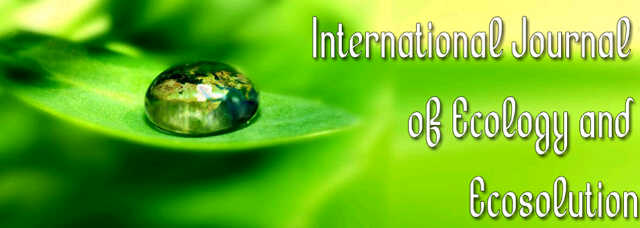Analysis of the exploitation of NTFPs and their contribution to the well-being of households around the Belabo-Doume-Diang intercommunal massif
Stelle Djeukam, Armand Tanougong, Serges Okala, Barnabas Neba, Kevin Fokou, Kevin Enongene, Elvis Ngwa, Kalame Fobissie and Eugene ChiaInternational Journal of Ecology and Ecosolution
Published: February 21 2022
Volume 8, Issue 1
Pages 1-9
Abstract
In the East region of Cameroon, forest resources are composed of Woody and Non-Timber Forest Products (NTFPs). These NTFPs have long been a source of food, medicine, construction tools and ornaments. The lack of information to assess the current and potential contribution of these products to household incomes and to improving food security, the absence of official programs and a structure for managing and promoting these products is one of the obstacles to the development of these resources. It is in this perspective that, as part of the "REDD+ Feasibility Study" project, a study was conducted in three municipalities (Belabo Doume Diang) of this region. The objective was to obtain information on the importance of NTFPs in rural households. To achieve this, a sample of 1051 households in 45 villages in the three municipalities was selected for the survey. The selection of each household for the survey was preceded by a preliminary survey of the local population for a good targeting of direct or indirect NTFP operators. From this study, it appears that 87 NTFP species are collected in these villages. This shows that like the forest areas, these villages constitute an important reservoir of NTFPs in Cameroon. This study also shows that about 64.6% are used within households for food, pharmacopoeia, packaging and handicrafts. The market and other uses such as construction with a total of only 34.4%. The most commonly used harvesting methods are picking, gathering and debarking. They account for 81.3% of the total, with the collection method having the highest rate of 31.2%, while the smoking method is the least used. It shows that 90.8% of the households surveyed stated that agricultural products contribute to their income while only 76.9% stated the same for NTFPs, in contrast to timber and livestock products, which contribute very little to household income (4.4% and 4% respectively). NTFPs contribute to the food security of local populations through the direct consumption of products within households and the income derived from the sale of NTFPs for the purchase of other food categories (oil, salt, meat, beverages) that households do not have. Harvesting the various organs (fruits, leaves, stems, bark, and roots) and sap of NTFPs can have an impact that varies from very low to very high. This could affect the sustainability of the resource. In Cameroon, the major challenge for the NTFP sector is to increase incomes from these products while considering their uses in the future. It would be necessary to envisage the organization of the actors while putting in place a strategy and action plan giving broad guidelines for the management of these resources.
Keywords: NTFP, food security, income, conservation, intercommunal forest massif.
Full Text PDF
